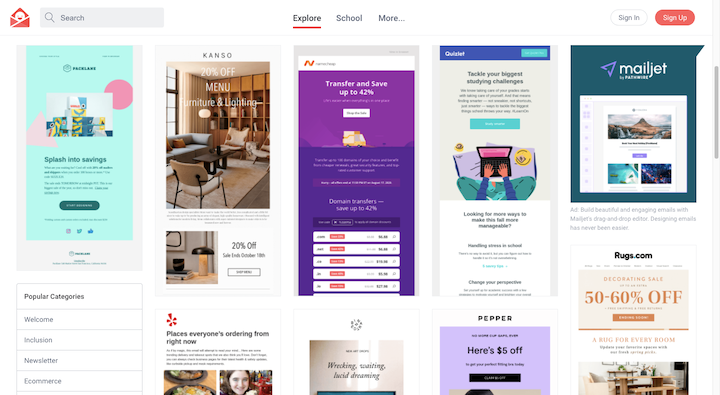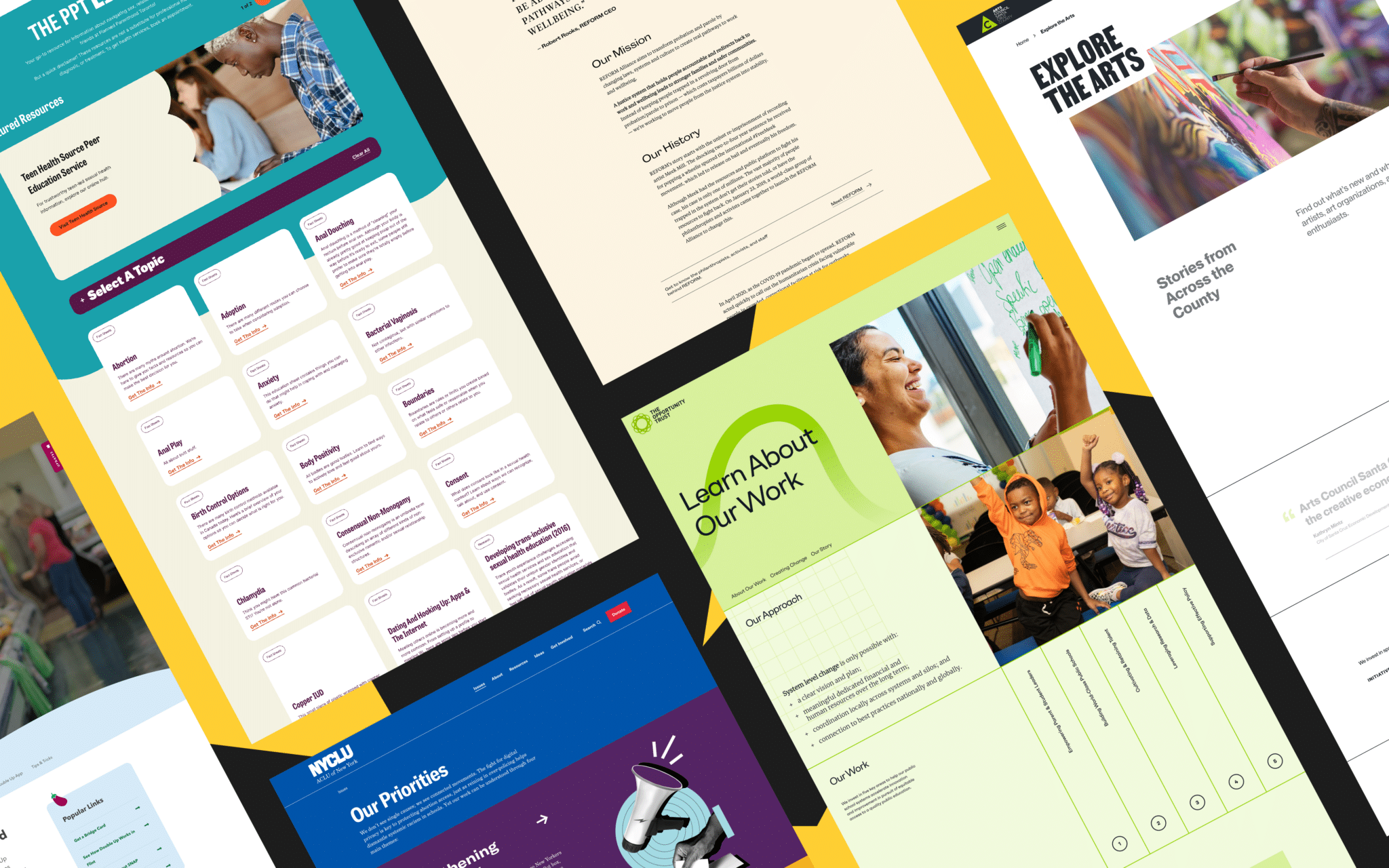The Ultimate Guide to Building a Powerful Website Design
The Ultimate Guide to Building a Powerful Website Design
Blog Article
The Ultimate Guide to Modern Website Design Trends
In the ever-evolving digital landscape, contemporary site design trends play an essential duty fit user experience and involvement. From the increase of minimalist style concepts that focus on simpleness to the effect of vibrant typography in specifying brand name identification, each element adds to a natural on-line presence. The emphasis on mobile-first and receptive techniques, alongside innovative microinteractions, additionally enhances usability. The growing focus on sustainable web style methods reflects a dedication to ecological obligation. These patterns collectively raise important questions regarding the future of efficient website design and what it implies for companies and consumers alike.
Minimalist Design Concepts
Minimal style principles stress the concept that much less is a lot more, promoting for simplicity and capability in aesthetic communication. This strategy remove unneeded aspects, focusing rather on crucial components that share the intended message properly. By prioritizing clarity, minimal design boosts user experience, enabling site visitors to navigate web sites easily.
Core tenets of minimal design include making use of ample white area, which produces a feeling of balance and company. This adverse room not just guides the customer's attention to crucial elements yet also cultivates a relaxing visual atmosphere. Furthermore, a limited color combination is usually utilized, making use of soft tones or single schemes to maintain visual communication and protect against overwhelming the individual.
Typography plays a critical duty in minimal design, where readable typefaces are picked for their simplicity and effectiveness in interacting content. Ultimately, minimalist style concepts cultivate a focused environment that urges users to engage with the content, boosting the overall efficiency of modern-day website design.
Strong Typography Selections
Accepting vibrant typography options has actually come to be a specifying attribute of modern-day site design, as it effectively captures focus and communicates strong messaging. Developers are increasingly utilizing typography not just as a practical element but as a vital aesthetic component that boosts the total aesthetic and individual experience.

Additionally, the juxtaposition of strong typography with minimal design principles permits striking contrasts, boosting readability while keeping aesthetic appeal. Using whitespace around strong message further highlights its significance, ensuring that the message reverberates with the audience.
As electronic landscapes end up being more affordable, leveraging bold typography allows brands to differentiate themselves and leave a long-term impression. The cautious selection of font styles and their application can evoke feelings, develop tone, and drive action, making bold typography an indispensable device in contemporary website design. Ultimately, it is a powerful means to enhance storytelling and make certain that vital messages are not only seen but additionally really felt.
Mobile-first and receptive Layout
Receptive and mobile-first design has arised as a vital principle in modern-day website growth, reflecting the boosting reliance on smart phones for accessing on-line content. As user habits shifts in the direction of mobile browsing, developers need to prioritize producing experiences that adapt seamlessly across various screen dimensions and resolutions.
A responsive design guarantees that a website immediately adjusts its format, images, and capability based on the tool being used. Mobile-first design supporters for developing sites initially for smaller displays, ultimately scaling up to bigger displays.
Executing responsive and mobile-first principles not just satisfies user choices however also aligns with seo (SEARCH ENGINE OPTIMIZATION) methods. Major online search engine, like Google, focus on mobile-friendly sites in their positions, making it vital for companies to adopt these style strategies. In an affordable electronic landscape, embracing responsive and mobile-first design is not simply an alternative; it is crucial for making certain availability and involvement with a varied audience.
Engaging Microinteractions
Microinteractions play an essential function in improving individual engagement and overall website experience, particularly in the context of mobile-first and responsive design. These refined design elements offer prompt comments to individuals, making communications extra enjoyable and user-friendly. Instances consist of button computer animations, alert notifies, and loading indications, which not only overview individuals yet likewise develop a feeling of connection with the interface.
Integrating engaging microinteractions can substantially boost use by reducing cognitive load. When individuals receive acoustic or aesthetic feedback upon doing actions, such as clicking a switch or submitting a type, they feel more certain in their options. This promotes a smoother navigation experience, Discover More ultimately boosting customer retention.

As website layout patterns remain to develop, the importance of microinteractions can not be overstated. They act as the subtle yet powerful touchpoints that transform common interactions into amazing experiences, consequently elevating the overall effectiveness of modern-day website design.
Sustainable Website Design Practices
Sustainable website design practices are ending up being increasingly necessary as the digital landscape expands and environmental worries rise. Designers and designers are identifying their responsibility to develop internet sites that not just offer individual demands but likewise lessen environmental effect. This technique encompasses a number of key techniques.
Firstly, enhancing power intake is paramount. Web sites must be made to pack rapidly and efficiently, which decreases web server energy usage and enhances individual experience. Methods such as picture compression, minimizing HTTP requests, and utilizing contemporary coding methods add dramatically to this goal.
Secondly, picking environment-friendly hosting companies is important - website design. Numerous holding companies are now powered by renewable resource sources, allowing web sites to run in a much more sustainable manner. This selection mirrors a dedication to decreasing carbon footprints
Moreover, adopting a minimal design can improve sustainability. Fewer aspects on a page bring about less information transfer, which not only speeds up loading times but also conserves sources.
Lastly, promoting digital ease of access ensures that web sites reach a broader target market without unnecessary bloat, aligning individual experience with environmental obligation. By incorporating these sustainable techniques, here are the findings internet designers can add positively to both individual engagement and the earth's health.
Conclusion
In summary, contemporary internet site layout patterns stress the combination of minimal concepts, bold typography, and responsive layout to improve individual experience. Involving microinteractions add to remarkable communications, while sustainable techniques advocate for ecologically conscious development. Jointly, these components not just raise aesthetic appeal however additionally boost performance, guaranteeing that sites are both aesthetically striking and straightforward. Adopting these fads is essential for developing impactful electronic experiences that reverberate with customers in a significantly competitive online landscape.
In the ever-evolving digital landscape, modern website design patterns play a crucial function in shaping individual experience and involvement. By focusing on clarity, minimal style improves customer experience, allowing visitors to navigate internet sites effortlessly.
Ultimately, minimalist design principles grow a concentrated atmosphere that motivates users to engage with the material, boosting the overall effectiveness of modern web site style.Microinteractions play an essential role in improving customer interaction and overall website experience, specifically in the context of mobile-first and responsive layout.In go to my blog summary, modern website layout patterns emphasize the integration of minimalist concepts, strong typography, and receptive style to boost customer experience.
Report this page